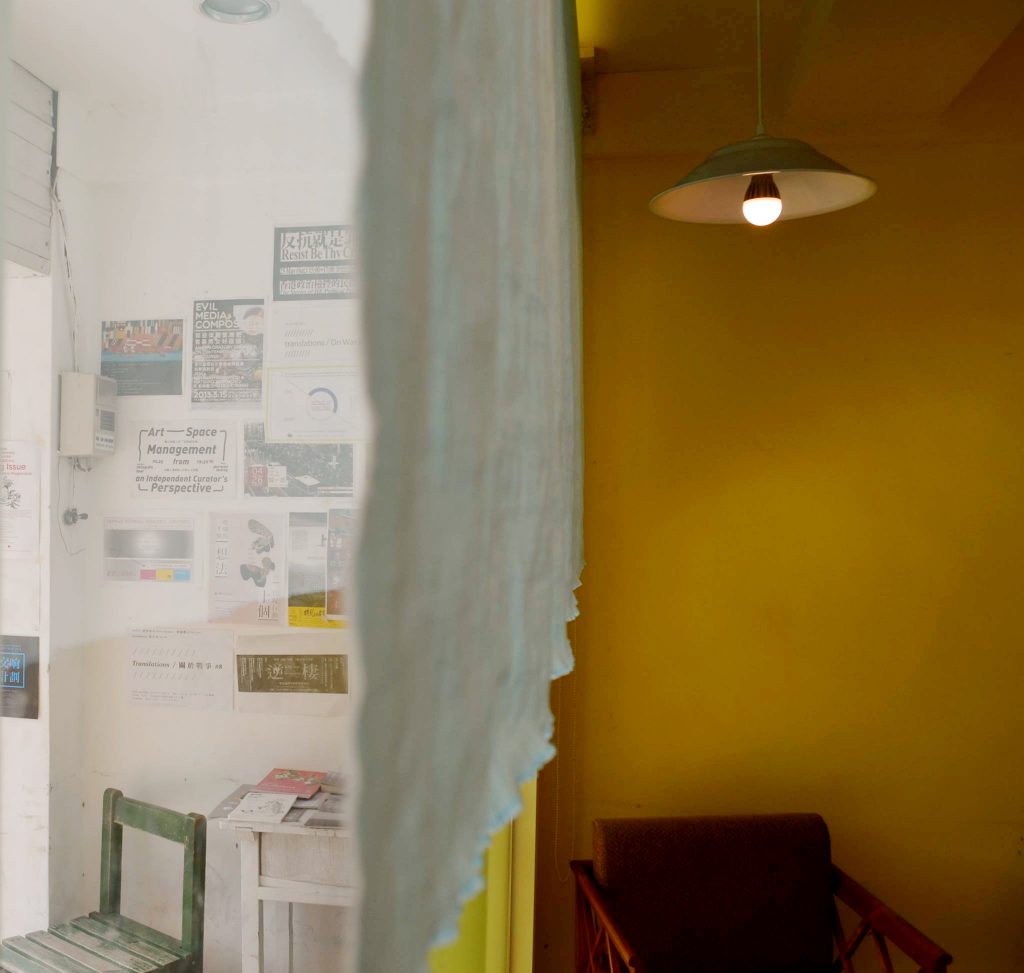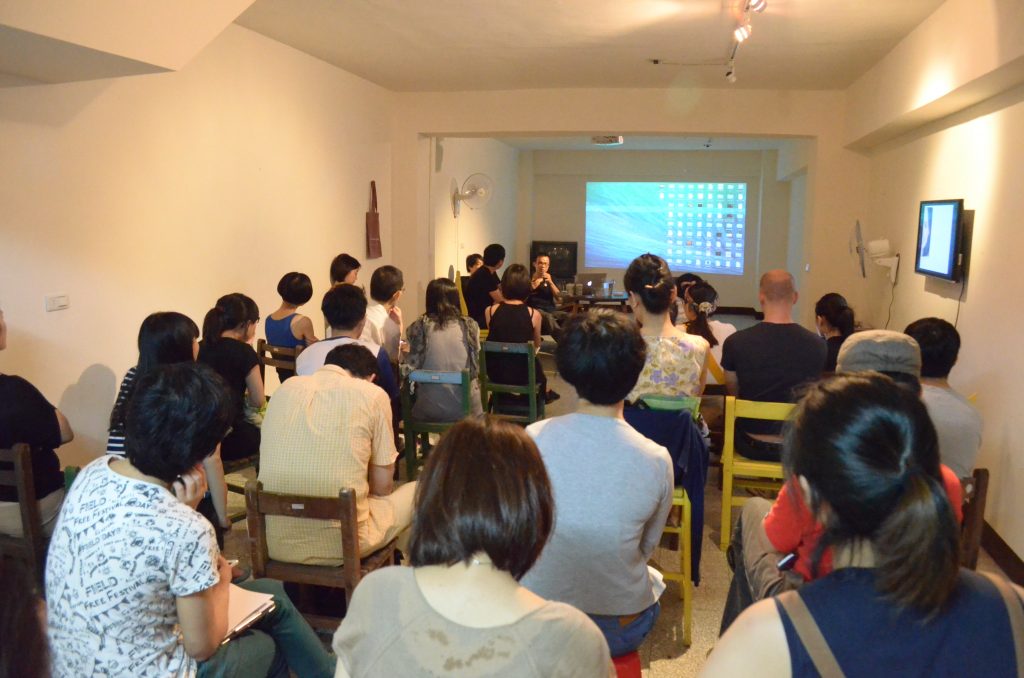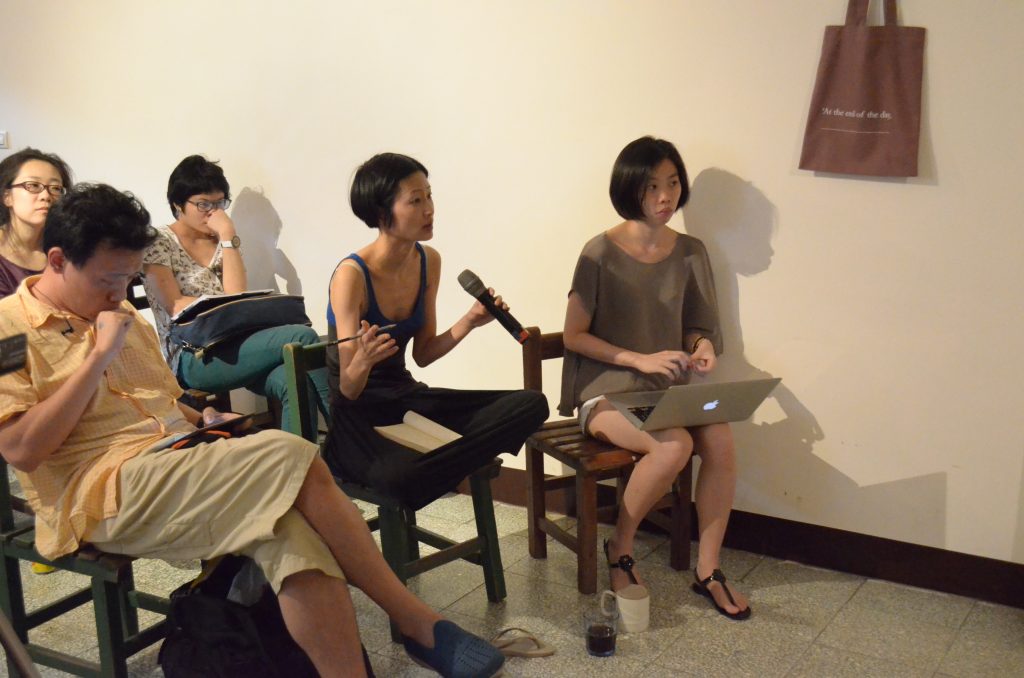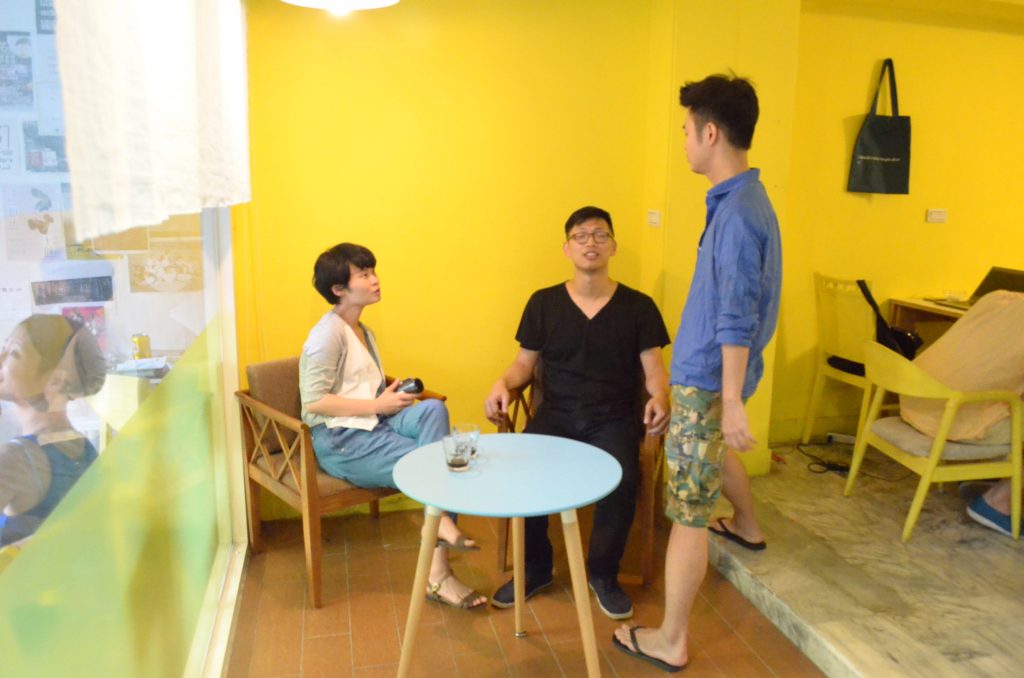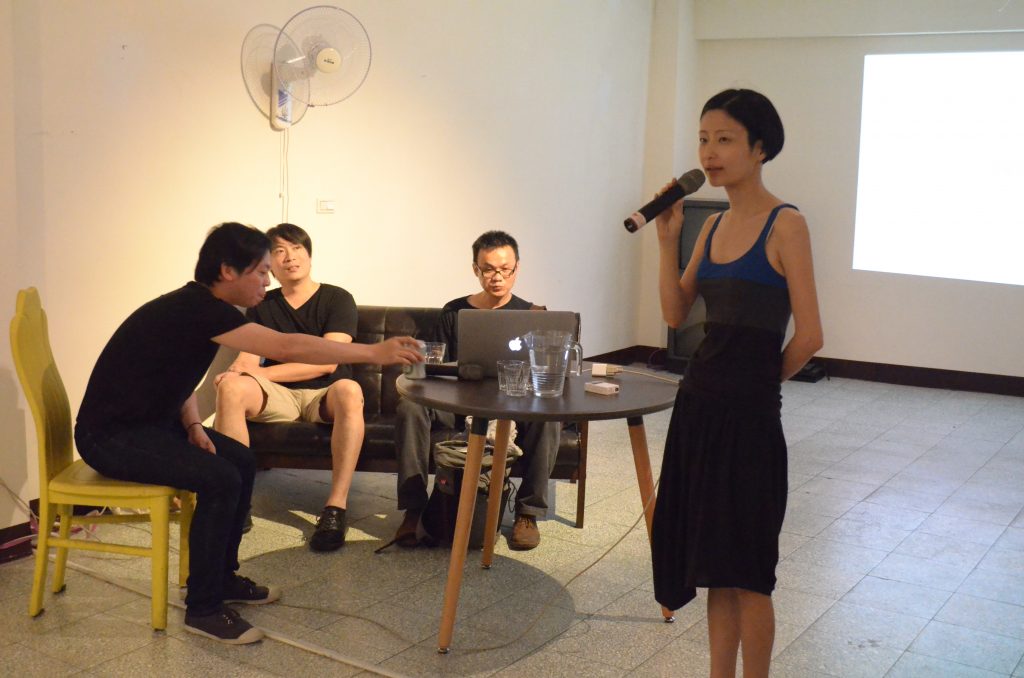2014.7.5. 3pm
The Burnning Issue Residency Programme: When (not) to let go – Lee Kit – Talk#3
關鍵議題駐村計劃:甚麼時候(不)放手 – 李傑 – 講座#3
(For English please scroll down)
(The speech is in Chinese. 演講以中文進行。)
有關狀態和社會
主持人|李傑
與談人|賴志盛
與談人|高俊宏
講座#3 文字記錄
文/張舒涵
經過前兩場談話的鋪陳,似乎逐漸勾勒出李傑在此駐村計畫中主要對話:之於藝術家的個體性與社會性。並以「工作」為命題,切入論之。就社會性介入來說,高俊宏作品恰似較為貼近;相對賴志盛的創作狀態來說,專職藝術家始終不發生在其身上。建築工地的工作經驗是作品的根本靈魂。同樣濃縮藝術家本身於作品中,一透過工地考現學方式,轉換呈現;另則在視覺元素中投注其精神。
回溯兩位講者時代背景(西元七零年代左右),歷經政治社會的改革開放,一股變革與參照國外的風氣席捲整個社會,即便有了整體性的改革,但我們卻始終無法真正進入主流藝術史的脈絡中,因而存在、延續了一股鬱悶。有了時代背景的奠基,也才有高俊宏早期的《再會,我已從此離去》、社會化無聊系列中的《追火車》、《跑河堤》、《阿普遜傘》、《泡沫的消失》…。從身體出發,以「行動」作為做作品的方式。不論作品中物件元素為何?箭頭符號、球體、箱子、火車,創作的形式已在創作歷程中達到飽和狀態,甚至面臨做不下去一途,再更進一步透過歷史距離讓創作方向回扣歷史事件以看整個社會。
「藝術家」一直都僅是個具有雙向開口的中介形體,連接內部(個體)與外部(社會)。賴志盛試著將內部與外部對話的時間拉長,並以漸進的方式擴充作品的觀念性,即便作品形式簡單。以原寸素描為例,使用簽字筆勾勒誠品藝廊空間內所有平面的交界線,而同等形式亦展現于倫敦的Hayward Gallery。呈現的素描概念超越傳統美學的素描觀念,矛盾的是其形式的本質上卻又更貼近素描(drawing)草圖的概念。另還有《垂直》、《水平》、《門》、以及近期發表的《邊境》,一貫減法的創作模式讓作品與場域達到高度的結合,或者說場域即作品的一部分;反觀,高俊宏則將整個社會環境剖面、提出、再呈現,甚至在2003年後退以第三者角度,把自己定位為觀察者,根部深入社會,並傾向透過合作計畫完成田野調查記錄如《家計畫,一個太遠的緬懷》、《廢墟》…。
不論賴志盛或高俊宏的作品實際上都是很個人的,從藝術家視野出發看待外部世界,剝除形式、手段等外在因素,往往藝術家只是一個角色。真正想要走進社會結構予以回應其實並不需要高掛藝術家此一身分的標籤。通過李傑的解釋,其所謂「安身立命」後再響應社會,不代表不關心或者個體與社會的連結必需具手段性的議題存在,而是以一種謙虛的、個人的姿態看待,並且在此之前的首要工作是↼做好自己。
主辦單位:台北當代藝術中心
專案主持人:鄭美雅
專案經理:彭若瑩
專案團隊:蘇珀琪、方彥翔、余政達、許鋒瑞、陳小雜、張
專案助理:賴瑋婷
本計畫由文化部所贊助
About the situation and the society
Moderator | LEE Kit
Speaker | LAI Chih Sheng
Speaker | KAO Jun Honn
Talk#3 Highlights
Text/Tiffany
Lee Kit moderated a conversation with Lai Chih Sheng and Kao Jun Honn about the situation and the society. During this discussion Lee Kit questioned Lai and Kao about what it means to be an artist in present and what roles do artist take in a modern society. He also mentioned that artworks relate to the society isn’t just merely about politics, there are other aspects to the society. Furthermore he mentioned that he doesn’t just make political art but rather he makes art politically.
Kao firstly started producing works of art during the time when Taiwan first lifted it’s martial law after 38 years. Kao was interested in what really happened during the time and the idea of what defines history. He was greatly influenced by the aftermaths of the martial law when people didn’t really understand what was to come. Therefore Kao, as an artist, he recreates snippets of common everyday life presenting a different perspective or a new way of look at certain aspects of the society. He believes that we often feel that we are not part of the world around us because there just seem to be so much going on yet in small ways each and every one us is still an important part that makes up our society. To him an artist’s role in society is to create different stained glassed windows for viewers to see different aspects of society in a new light and realize that we are all connected as earthlings. There is something about individual that one can relate to, we are not all as different or as unique as we think we are. Referring back to Lee Kit’s idea on individualism, Kao sees individualism as something that isn’t just about the self but instead about each and every individual.
Lai started his artistic career during the same timeframe as Kao, therefore like Kao he was deeply influenced by the lift of the martial law period in Taiwan. However he took a different artistic route as Kao. As an artist Lai is constantly searching for something that never really seems to be attainable, perhaps because after the martial law period whats to come seemed very surreal. Lai makes the site-specific installations that are not seemly an obvious change yet little details throughout his site makes one start to ponder upon what makes up reality. Lai see art as presenting his own individual voice towards society. He says that no matter what others attitude are towards his works are or if others don’t embrace it, he will still have to stay same attitude and respect his viewers because that is his individual voice that not all needs to accept it. Yet as an artist Lai believes that context is a crucial point and that art is a reponds to what is going on around the society.
Lee Kit concludes that doing something simple takes a lot of effort and time. As a collective group of artist we must be confident in what we do and our perspective towards the society. Because contemporary art doesn’t just move or change one in a snap of a figure it takes time to think and appreciate it. Referring back to Kao and Lai an artist’s role is to show viewers a different perspective towards the world. No matter if your viewers agree towards your perspective or not, it is important to stand strong behind what you believe. After all for contemporary art, context is all, and it takes time for people to see a the world through a new new lens.
Project director: Meiya CHENG
Project manager: Jo Ying Peng
Executive Team: Frankie SU, Yen-Hsiang FANG, YU Cheng-Ta, Fong-Ray Hsu, Chen Hsiautsa, Shu Han Chang
Project assistant: Tiffany Lay
The programme is sponsored by the MINISTRY OF CULTURE

